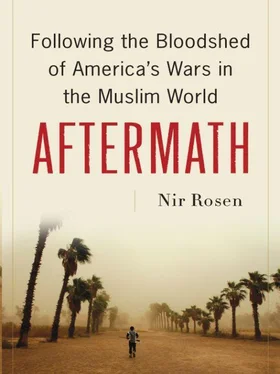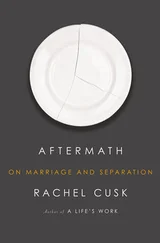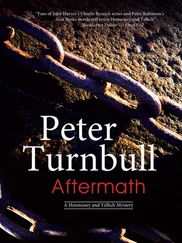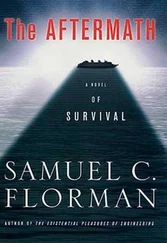In a December 22, 2006, interview with the American-sponsored Radio Sawa, the interviewer pressed Dulaimi on why he avoided criticizing Al Qaeda in Iraq but regularly criticized the Mahdi Army. “Is Al Qaeda a terrorist organization or not?” demanded the interviewer. “I will not and will never answer this question,” said Dulaimi, “and if you ask me again I will hang up the phone.” The interviewer persisted, and Dulaimi hung up.
The year 2006 culminated with one last insult to the Sunnis of Iraq and the region when Saddam Hussein became the first modern Arab dictator to die violently since Egypt’s Anwar Sadat in 1981. Saddam’s hanging at the hands of chubby Iraqi men wearing ski masks was likely to be perceived by many as an American execution and as part of a trend of American missteps contributing to sectarian tensions in Iraq and the region. Others viewed it as a lynching by reveling Shiite militiamen. The trial of Saddam was viewed by detractors as an event stage-managed by the Americans. According to Human Rights Watch, the Iraqi judges and lawyers involved in prosecuting Saddam were ill prepared and relied on their American advisers. American minders shut off the microphones and ordered the translators to halt whenever they disapproved of what was being said by the defendants. Saddam was being executed for the massacre in Dujail. It was the least of his crimes, but it had targeted Shiites and the Dawa Party, and they wanted revenge for his crimes against the Kurds—others could even be judged.
For Sunnis the important Muslim holiday of Eid al-Adha began on Saturday, December 30; for Shiites it began on Sunday. According to tradition in Mecca, battles were suspended during the hajj period so that pilgrims could safely march to Mecca. This practice even predated Islam; Muslims had preserved it, calling this period Al Ashur al-Hurm, the months of truce. By hanging Saddam on the Sunni Eid, the Americans and the Iraqi government were in effect saying that only the Shiite Eid had legitimacy. Sunnis were irate that Shiite traditions were given primacy (as was increasingly the case in Iraq) and that Shiites had disrespected the tradition and killed Saddam on this day. Because the Iraqi Constitution prohibits executions from being carried out on Eid, the Iraqi government had to declare that Eid did not begin until Sunday. It was a striking decision, virtually declaring that Iraq was a Shiite state. Eid was the festival of the sacrifice of the sheep. But Saddam quickly became known as “the Martyr of the Sacrifice.”
Saddam had been in American custody and was handed over to Iraqis just before his execution. It was therefore hard to dismiss the perception that the Americans could have waited, because in the end it was they who had the final say over such events. Iraqi officials consistently complained that they had no authority and that the Americans controlled the Iraqi police and the army. So it was unusual that Iraqis would suddenly regain sovereignty for this important event. For many Sunnis and Arabs in the region, this appeared to be one president ordering the death of another. It was possibly a message to Sunnis, a warning. The Americans often equated Saddam with the Sunni resistance. By killing Saddam they were killing what they believed was the symbol of the Sunni resistance, expecting its members to realize that their cause was hopeless. But Saddam’s death also liberated the Sunni resistance from association with Saddam and the Baathists. They could more plausibly claim that they were fighting for national liberation and not out of support for the former regime, as their American and Iraqi government opponents often claimed. At the same time, the execution created a new symbol for those opposed to the occupation. Saddam was not given a hood, though prisoners normally do not have a choice about wearing one. The execution and the photo of the executed Saddam had the hallmark of the U.S. psy-ops tactics, similar to the deaths of Saddam’s sons in 2003. Even the U.S. plane that flew him to his final resting spot indicated U.S. management.
The unofficial video of the execution, filmed on the mobile phone of one of the officials present, further inflamed sectarianism. It was clear from the film that sectarian Shiites were executing Saddam. Men could be heard talking; one of them was called Ali. As the executioners argue over how to best position the rope on his neck, Saddam called out to God, saying, “ Ya Allah .” Referring to Shiites, one official said, “Those who pray for Muhammad and the family of Muhammad have won!” Others triumphantly responded in the Shiite chant: “Our God prays for Muhammad and the family of Muhammad.” Others then added the part chanted by supporters of Muqtada al-Sadr: “And speed his [the Mahdi’s] return! And damn his enemies! And make his son victorious! Muqtada! Muqtada! Muqtada!”
Saddam smiled and said something mocking about Muqtada. “Muqtada! It is this . . . ” but the rest was blocked by the voices of officials saying, “ Ila jahanam ” (go to hell). Saddam looked down disdainfully and said, “Is this your manhood?” As the rope was put around Saddam’s neck, somebody shouted, “Long live Muhammad Baqir al-Sadr!” (Executed by Saddam in 1980, Sadr was still venerated by all three major Shiite movements in Iraq: the Dawa, the Sadrists, and the Supreme Council.) Others insulted Saddam. “Please all stop,” one man pleaded. Saddam then said the Shahada, or testimony, that there is no god but Allah and Muhammad is his prophet. When he tried to say it again the trapdoor opened, and he fell through. One man then shouted, “The tyranny has ended!” Others called out triumphal Shiite chants. Somebody wanted to remove the rope from his neck but was told to wait eight minutes.
The Sunni Islamo-nationalist website Islam Memo claimed that the Safavids burned Saddam’s Koran after they killed him, though there was no evidence of this. Similarly, the site made other unsubstantiated claims: that Saddam exchanged insults with the witnesses to his execution and cursed one of them, saying, “God damn you, Persian midget”; that Grand Ayatollah Ali Sistani blessed Saddam’s execution; that the Iraqi government refused to provide Saddam with a Sunni cleric to pray for him before the execution; that Saddam said, “Palestine is Arab” and then recited the Shahada before he was executed; that following his death his body was abused. Although the Shiite-dominated official Iraqi media claimed Saddam was terrified before his execution and that he fought with his hangmen, Saddam’s onscreen visage was one of aplomb, for he was conscious of the image he was displaying and wanted to go down as the grand historic leader he believed himself to be.
Predictably, there were celebrations in Shiite areas, and the civil war continued. Following the execution three car bombs exploded in Baghdad’s Shiite district of Hurriya, killing and injuring dozens. Another one went off in Baghdad’s Seidiya district, near its amusement park, killing at least two civilians and two policemen. A roadside bomb exploded near a children’s hospital in the majority-Shiite area of Iskan, killing two and injuring several others. In the southern town of Kufa, dominated by supporters of Muqtada, a car bomb exploded near a market, killing and injuring dozens. In the northern town of Tal Afar, a man wearing a suicide belt exploded himself in a market, killing at least five and injuring several others. It was also claimed that Sistani’s representative was killed and his office was burned. In the town of Saqlawiya, in Anbar province, there was a big demonstration against Saddam’s execution at which marchers carried large portraits of the former leader. Immediately after the execution five mortars were fired in Falluja, targeting the southern checkpoint to that city, known as the Numaniya checkpoint. In Tikrit, site of another large demonstration, Saddam’s tribe officially requested that the Iraqi government allow his body to be buried near his parents in Owja, the town where he was born.
Читать дальше











